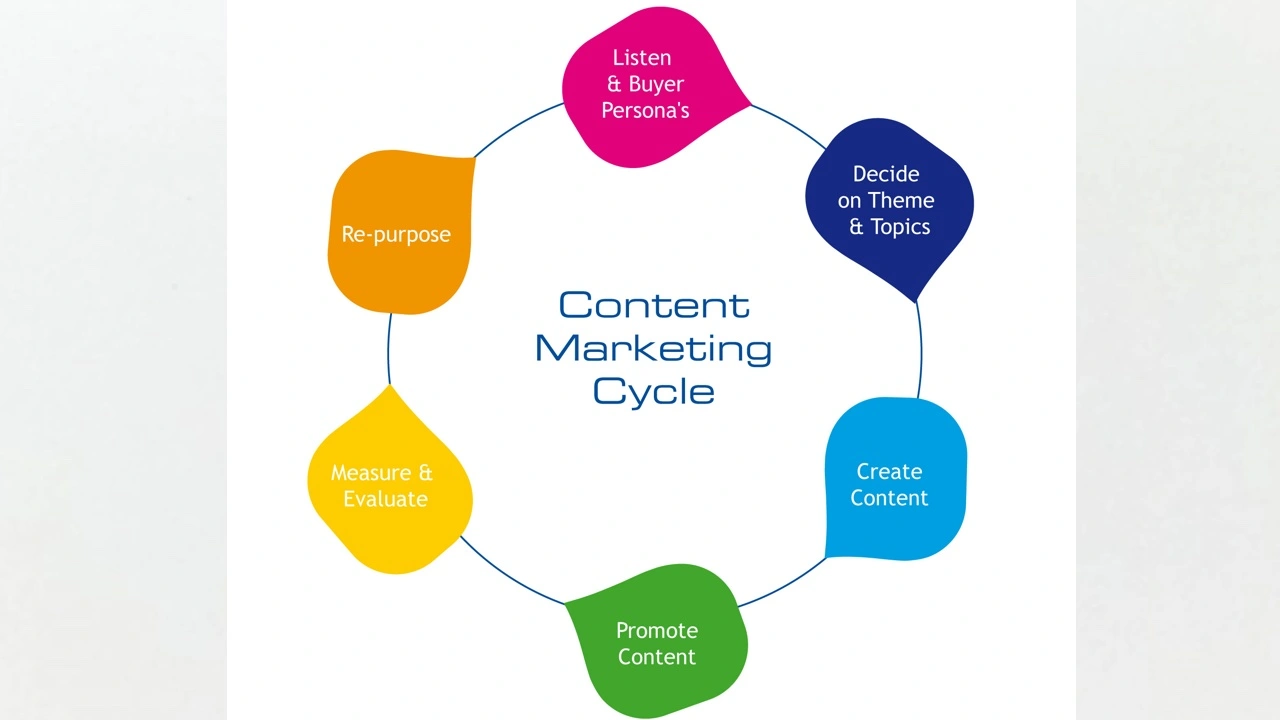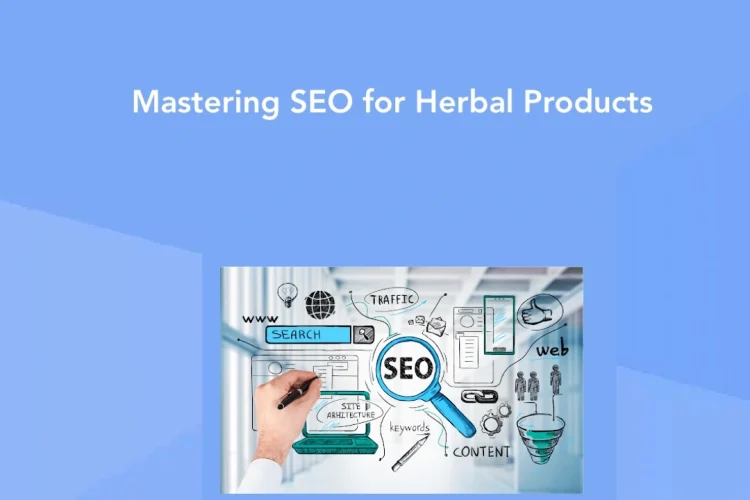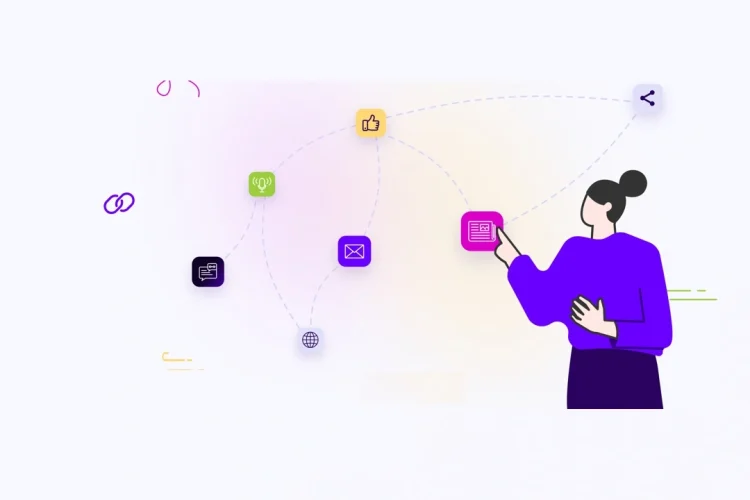
Although content marketing has been around for centuries (it’s first instance being in 1642), in the late 19th century the industry skyrocketed as a result of technological advancement, innovation and improvements in means of communication. IT began as a result of the need for companies to forge better connections with their customers. In more recent times (since 2010) the content marketing industry has gained incredible popularity thanks to the internet. Modern brands require content marketing to survive in these modern terms.
What is Content Marketing?
According to the Content Marketing Institute (CMI), content marketing is a strategic marketing approach focused on creating and distributing valuable, relevant and consistent content to attract and retain a clearly- defined audience and ultimately to drive profitable customer action. In simpler words, content marketing is a form of marketing which involves the creation and sharing of online material be it videos, blogs or social media posts, that doesn’t necessarily promote a brand but in intended to generate interest in the product or service offered.
The world of content marketing is ever growing as it has no limitations. Content marketing can take various forms, including; blogging, video, podcasting, infographics, email, visual content, eBooks, lead magnets, whitepapers, slideshow presentation, courses, webinars, apps, social media and many more.
Benefits of Content Marketing
Content marketing is extremely lucrative both for the content marketer and the audience as it hold a very high range of possibilities. It is one of the most effective, practical and useful marketing strategies today. Content marketing is inexpensive, safe and beneficial in many areas. A few of these benefits are:
- More on- site content.
- Higher visibility in search engines
- Higher domain authority
- More referral traffic
- More social traffic (followers)
- Increased conversion potential
- Improved brand reputation
- Tighter customer/ reader relationship
- Universal utility
- Decreased market cost and compounding value
More on- site content
The more time spent on content marketing will increase the amount of content on your site. This simply means customers will have more to see which then gives the avenue for them to stick around more and familiarize themselves with your brand. The better your content, the longer your audience stays on your site.
Higher visibility search engines
With every post you add to your blog, another page is added to Google’s index. Having quality pages can give you more opportunities to rank for more search queries. The use of long- tail keywords and topics should have no problem appearing for those searches with your archive information.
Higher domain authority
Writing high quality content can improve your perceived expertise, authority, trust and relevance of your site. If your content gains more inbound links from external sources, your websites domain authority will increase even further. A higher domain authority correlates strongly with higher search rankings.
More referral traffic
This is as a result of your commitment to the guest publishing portion of your content strategy. When you have external publications as a guest, you’ll have the opportunity to link back to your site.
More social traffic (followers)
Organize your social media content for more increased exposure. If you do this, more people will see and interact with your material. They would also be able to share your material with friends.
Increased conversion potential
The main objective of content marketing is to inform, help and add value to your audience. When that’s done, you can use the remaining space you have to pitch one of your products or services.
Improved brand reputation
When people interact with your content, if they find your content enlightening and informative, they’ll think highly of your brand.
Tighter customer relationship
Great contents can increase the loyalty and the closeness of your customer relationships. If you use personal of individuals to share content, your customers can develop a more personal relationship with your brand.
Universal utility
Like I said earlier, content marketing is extremely lucrative. Any business can use content marketing as major marketing strategy.
Decreased marketing costs
Content marketing majorly only costs time. It is very cost effective and it offers compounding returns.
Now let’s talk strategies
Content Marketing Strategies
A content marketing strategy is a strategy that focuses on the planning, creation, delivery and governance of content. There are many content marketing strategies to choose from, such as; social media strategy, email strategy, audience strategy, website strategy etc. The main aim is determining what strategy works best for your brand or company.
Steps to create a content marketing strategy for your business
Step 1. Set your missions and goals
Step 2. Establish your key performance indicators
Step 3. Know your audience
Step 4. Asses your current position
Step 5. Figure out the best content channels
Step 6. Decide on content types
Step 7. Identify and allocate resources
Step 8. Create content calendar
Step 9. Create content
Step 10. Distribute and market
Step 11. Measure results
Step 1. Set your missions and goals
A good starting point is to map out a mission statement. A content marketing mission statement includes:
- Your company’s target audience
- The content you’ll use to reach your audience
- The audience benefits
Asides having a concise mission statement, you should also outline your goals which typically includes:
- Increasing company profit revenue
- Generating sales
- Generating traffic
- SEO success
- Reduced marketing costs
- Social media engagement etc.
Step 2. Establish your key performance indicators
The way to achieve this is to make your KPIs specific and measurable. KPIs will assist you in keeping record of your goals by providing milestones you can check off. They include all the companies’ goals and the plans to achieve them. Usually they have specific numbers attached to them.
Step 3. Know your audience
For a successful content marketing strategy, you will have to know your audience into order to create the right content for them. There are three actions you need to take
- Collect demographic data (age, gender, education, income…)
- Get customer feedback
- Create buyer personas
Step 4. Asses your current position
Many businesses already have content out there. This includes content that’s on your blog, as well as social media content, podcasts, videos, and so on. The next step is to figure out whether that content is helping you to meet your goals.
To do that, your company will need to carry out a content audit. That simply means:
- Logging all the pieces of content, such as blog posts, guest posts, and so on
- Assessing their usefulness or success
- Identifying the gaps
You should also compare your content with that of your competitors.
Step 5. Figure out the best content channels
As you work through this process of choosing a content marketing strategy, you’ll start to get an idea on how where the heads of your audience is at. It’s best to focus on what’s working for your company and expand from there, rather than try to do everything at once.
But to be absolutely sure, you’ll need to take another look at your company’s web analytics.
With the found information, you can easily decide which networks to target to get social media engagement and shares for your content.
Step 6. Decide on Content Types
In this step, you’d have to think about the types of content you need to create. There are some content types that every content marketing strategy will include. Most successful content marketing strategies rely on having a central core of content published on your own site which can then be shared on other sites. So blog posts are an essential part of your content marketing, and they still deliver strong results. Ideally, your blog posts will be actionable, valuable, and shareable, and may include a range of article types.
Step 7. Identify and Allocate Resources
Now you have identified the type of content you want to create, who you’re creating it for, and how/ where you plan on sharing it, it is vital to make sure you have everything you’d need for your content marketing strategy. That involves answering questions like:
- Who’s in charge of producing and maintaining content?
- What human, physical or digital tools and resources do you need to create the content?
- What will your publishing workflow look like, including content scheduling?
Step 8. Create a Content Calendar
As part of your content strategy, you will need to know exactly when you want to publish your content and each of the platforms you want to use. Lack of planning is a key content marketing mistake. It is essential to use a content calendar to get all your content scheduled. There are several ways to do this.
One way is using Google calendar. You simply input the due dates for each piece of content there. It works very well, especially if you’re not publishing a lot of content. Using Google calendar is a very simple approach, but if you’re publishing a lot of content, and have to manage a content team and the production workflow you’ve decided on, then you’ll likely need to use a platform with more features.
Step 9. Create Content
By now you can tell that a lot of prep work goes into your content marketing strategy before you actually create a piece of content. Finally in this step, you’re going to do just that. With the research you’ve already done, you’ll have an idea of what type of content post to create.
- Firstly, you pick a title from your calendar and start working on it.
- Research Your Content
- Create the Content
Step 10. Distribute and Market
The next step of your content strategy is distribution and marketing of the posted content. You would not get the expected results unless these two factors are effectively put into consideration. Set a schedule for sharing your content on social media, both immediately, and through a drip campaign via a tool.
- Use email marketing to distribute your content to subscribers.
- Notify any influencers mentioned in your content to spread the word even wider.
Step 11. Measure Results
Finally, it’s time to assess the success of your content marketing strategy using your key performance indicators. To do this, you will return to those KPIs you set at the start of the content strategy plan to evaluate the performance of your content post.
That’s all you have to do! Those are the basics on how to create your content marketing strategy.
Why is Content Marketing Important
In today’s global world, it would be almost impossible for a company to succeed without content marketing. Not only is content marketing a way for companies to stay ahead and informed about their competitors, it also keeps the target audience and potential customer informed. But these aren’t the only reasons why content marketing is important. Content marketing has various reasons that makes it vital for a modern company’s survival. A few of which are
- Content marketing improves brand reputation by building trust through content posts.
- Great content helps influence conversions between companies and potential customers
- Creating great content is a cost effective way of bringing in traffic
- Content enables your brand to showcase its subject matter expertise.
- It enables the company to build relationships with customers
- Content marketing enables you to post great, high quality content which is what the audience wants.
- Content marketing gives you the avenue to set yourself apart from competitors.
- Content is important during each step of the marketing funnel.
If you really want to see the importance of content marketing in action, then it’s time to get started! Start working developing a content marketing strategy that has your target buyer’s interests at its core. Then, you can be on your way to creating valuable content that helps boost conversions, knowledge about the brans or services you offer and improve customer interaction, retention and relationships.





